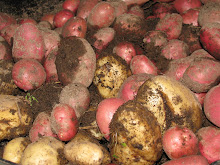“community-based mapping isn’t ‘action research’, it is political action” (p.16).
Janis Alcorn in “Borders, Rules and Governance: Mapping to catalyse changes in policy and management” illustrates that mapmaking and maps have the power for social change—if you do it right. Community mapping can be abused as only an idea by researchers, NGO’s and consultants utilized in project proposals and reports. But Alcorn says the “real power of the approach is unleashed when the process is led by the community” (p.16). When this occurs there can be several benefits to a community, including increased cohesion, increased democracy, intra-community cooperation, and most importantly local control over land-use and resource exploitation. Several examples are given that depict how maps can influence or strengthen these things. In particular, how they can be used to negotiate with national governments that operate “outside” of local people’s interests.
Alcorn discusses community-mapping projects in Indonesia, Brazil and Philippines to demonstrate how communities can us maps to actively negotiate rights. Alcorn draws on these examples to outline steps for success in the mapping process to activate change. Emphasized in the process is that the mapmaker act as a facilitator and community members the decision-makers. At the same time, a strategic plan that provides room for continual evaluation of the process is key. Alcorn asks as the initial stage, “what is the political costs and benefits of mapping…”(p.9). Following a series of questions, this initial phase is focused on teasing out issues that may arise, and foreseeing potential conflicts with the map, before any work is done. Another step discussed is choosing from a range of technologies, recommending being open to different technologies that fit the initial goals and target audience of the map. Technologies reviewed include, sketch maps, 3D models and GIS. These different technologies may all be used to bring different information into the process, however, for communication to governments, computer generated cartographic representations tend to have the most impact.
Alcorn’s article lays out a process for engaging in community mapping for social change, emphasizing the benefits and the potential for it to go wrong. The article lays out a clear direction for practitioners including addressing issues around mapping strategies to reduce potential conflicts. She bring in several points that were addressed in Jeff Fox’s paper, including the point that many Indigenous communities like it or not, must in engage in mapping their territories or risk losing all control of their lands. Concerns with the appropriateness’ of technologies such as GIS, come to light as communities are forced to document their cultural values, in a particular way that is not necessarily conducive to their ways of knowing. Therefore, the mapping process may force communities to re-shape their knowledge to protect the very thing they seek to conserve through the map.
Sunday, October 18, 2009
Subscribe to:
Post Comments (Atom)

No comments:
Post a Comment